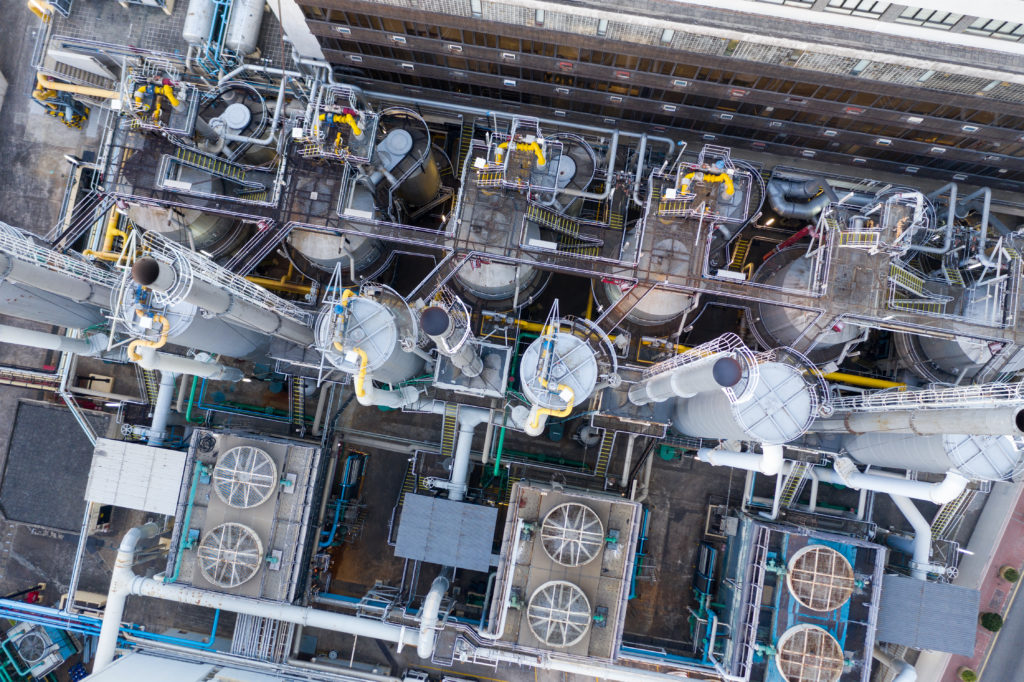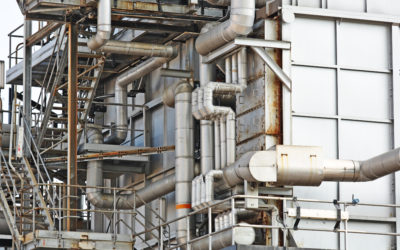The Ultimate Solution to Prevent Corrosion and Enhance Heat Exchanger Performance
Corrosion is a major issue for heat exchangers, as the combination of heat transfer and fluid exposure can accelerate damage to metal surfaces. Corrosion can reduce heat exchanger efficiency, cause costly failures, and lead to expensive repairs. Understanding the interaction between corrosion and heat transfer is critical for maintaining the performance and longevity of these vital systems.
HeatX, a cutting-edge surface treatment developed by Oceanit, offers a powerful solution to protect heat exchangers from corrosion and improve their operational durability. Let’s explore the impact of corrosion on heat exchangers and how HeatX can prevent it.
How Heat Transfer Influences Corrosion in Heat Exchangers
Heat exchangers operate by transferring heat between fluids and metal surfaces. This process creates temperature gradients—where the temperature of the fluid near the metal surface is different from that of the bulk fluid—which can significantly influence the corrosion process.
- Accelerated Corrosion at Higher Temperatures: When a fluid is heated, the temperature near the metal surface rises, increasing the rate of electrochemical reactions. This means that heat exchangers are at greater risk of corrosion in high-temperature environments, where the metal near the heat source corrodes faster than the rest of the system.
- Protective Layers Dissolving at Higher Temperatures: In heated fluids, corrosion products (e.g., rust) can dissolve rather than form a protective layer on the metal, increasing the risk of further corrosion. On the other hand, when a fluid is cooled, these products can adhere to the surface and create a protective scale, helping to reduce corrosion.
- Thermogalvanic Corrosion and Hot Spots: Heat exchangers often experience thermogalvanic corrosion, where hotter areas of the metal corrode faster than cooler areas. This creates hot spots—areas prone to localized corrosion, particularly in systems with flow blockages, deposits, or high temperatures. Hot-spot corrosion is especially common in copper alloy tubes used in desalination plants and other heat-sensitive systems.
- Corrosion During Phase Changes: When fluids boil or condense in heat exchangers, corrosion risks increase. Boiling can cause vapor bubbles to collapse, leading to cavitation erosion, which damages protective layers. During condensation, gases dissolved in the vapor can contribute to localized corrosion at the metal surface.
- Liquid-Line Corrosion: Water can evaporate when diluted acids are heated in heat exchangers, leaving behind a concentrated corrosive solution. This leads to localized corrosion at points where the solution becomes more aggressive.
HeatX: The Ultimate Solution for Preventing Corrosion in Heat Exchangers
Given the complexity of corrosion in heat exchangers, a robust and reliable solution is essential for protecting metal surfaces and extending the life of equipment. HeatX surface treatment provides that solution, offering several key benefits:
- Comprehensive Corrosion Protection: HeatX creates a strong, protective barrier on metal surfaces that prevents corrosive substances from interacting with the metal. HeatX reduces the risk of accelerated corrosion due to heat transfer by shielding the heat exchanger from aggressive fluids.
- Thermogalvanic Corrosion Resistance: HeatX helps prevent hot-spot corrosion by providing uniform protection across the entire surface of the heat exchanger. This minimizes the impact of temperature gradients, ensuring that no area becomes more vulnerable to corrosion than another.
- Durability in High-Temperature Environments: HeatX is designed to withstand high temperatures, making it an ideal solution for heat exchangers operating in harsh, high-temperature conditions. It prevents the dissolution of protective layers and helps maintain surface integrity even in challenging environments.
- Cavitation and Condensation Protection: HeatX offers additional protection against cavitation erosion and condensate corrosion, ensuring that heat exchangers remain operational even during phase changes. This is crucial for maintaining efficiency and reducing maintenance in systems where fluids frequently boil or condense.
- Long-Term Cost Savings: By preventing various forms of corrosion, HeatX significantly reduces the need for repairs, replacements, and frequent maintenance. This leads to longer-lasting equipment and lower operating costs over time.
Why HeatX is Essential for Heat Exchanger Protection
Heat exchangers are critical in power generation, chemical processing, HVAC, and desalination industries. Corrosion not only compromises the efficiency of these systems but also increases the risk of equipment failure and unplanned downtime. By protecting against corrosion, HeatX ensures that heat exchangers continue to operate at optimal performance for extended periods, reducing the risk of costly failures and improving overall system reliability.
Preventing corrosion is vital in industries where heat transfer and high temperatures are central to operations. HeatX offers a proven, long-lasting solution that combats the specific corrosion challenges associated with heat exchangers, helping operators maintain high performance while minimizing repair and maintenance costs.
Corrosion poses a serious threat to heat exchangers, especially in high-temperature environments where heat transfer accelerates damage to metal surfaces. HeatX surface treatment is the ideal solution for preventing corrosion in heat exchangers, offering protection against thermogalvanic corrosion, cavitation erosion, and condensate corrosion. With HeatX, industries can extend the life of their heat exchangers, improve operational efficiency, and reduce maintenance costs.
Protect your heat exchangers from corrosion with HeatX – the advanced surface treatment for long-lasting performance and durability. Learn more about HeatX from our experts.



